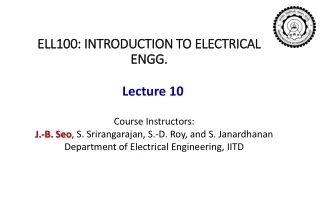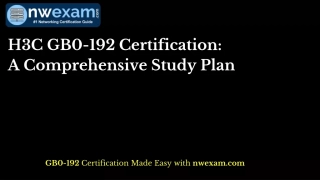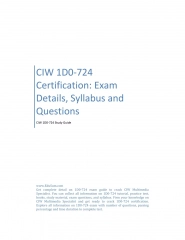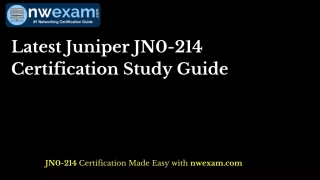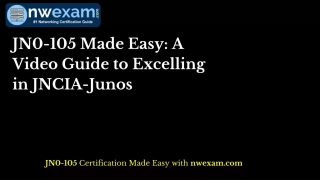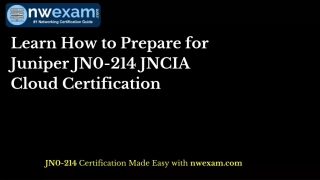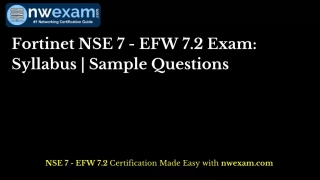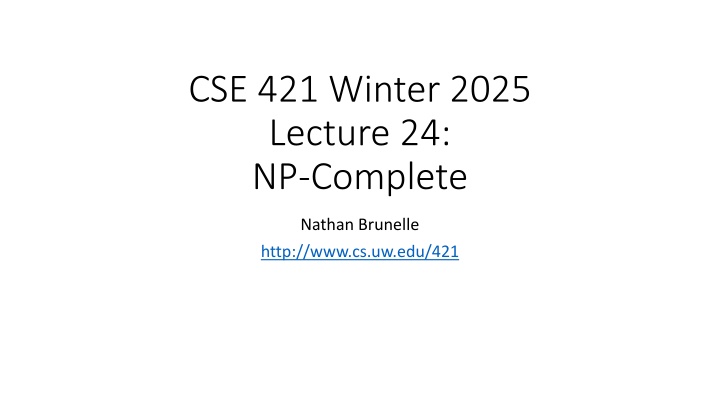
NP-Completeness and Polynomial Time Reductions in Computational Complexity
Explore the concept of NP-Completeness, Polynomial Time Reductions, and their implications in computational complexity theory. Understand how problems are interconnected through polynomial-time reductions and the significance of NP-Completeness in guiding scientific inquiries.
Download Presentation

Please find below an Image/Link to download the presentation.
The content on the website is provided AS IS for your information and personal use only. It may not be sold, licensed, or shared on other websites without obtaining consent from the author. If you encounter any issues during the download, it is possible that the publisher has removed the file from their server.
You are allowed to download the files provided on this website for personal or commercial use, subject to the condition that they are used lawfully. All files are the property of their respective owners.
The content on the website is provided AS IS for your information and personal use only. It may not be sold, licensed, or shared on other websites without obtaining consent from the author.
E N D
Presentation Transcript
CSE 421 Winter 2025 Lecture 24: NP-Complete Nathan Brunelle http://www.cs.uw.edu/421
Polynomial Time Reduction Defn: We write ? ?? iff there is an algorithm for ? using a black box (subroutine or method) that solves ? that uses only a polynomial number of steps, and makes only a polynomial number of calls to a method for ?. Theorem: If ? ?? then a poly time algorithm for ? poly time algorithm for ? Proof: Not only is the number of calls polynomial but the size of the inputs on which the calls are made is polynomial! Corollary: If you can prove there is no fast algorithm for ?, then that proves there is no fast algorithm for ?. Intuition for ? ?? : ? is at least as hard*as ? *up to polynomial-time slop. 2
Polynomial Time Reductions (Decision Problems) ?(??) Decision Problem ? Decision Problem ? ? ? Procedure for converting instances of ? into instances of ? Algorithm for solving ? Use the same answer Solution for ? Solution for ? Yes/No Yes/No Reduction 3
Lets do a reduction 4 steps for reducing (decision problem) ? to problem ? 1. Describe the reduction itself i.e., the function that converts the input for ? to the one for problem ?. i.e., describe what the top arrow in the pink box does 2. Make sure the running time would be polynomial In lecture, we ll sometimes skip writing out this step. Argue that if the correct answer (to the instance for ?) is YES, then the input we produced is a YES instance for ?. 3. Argue that if the input we produced is a YES instance for ? then the correct answer (to the instance for ?) is YES. 4. Contrapositive 4
Relationship among the problems so far Using polynomial time reductions we have found: Independent-Set ? Clique Clique ? Independent-Set Vertex-Cover ? Independent-Set Independent-Set ? Vertex-Cover Clique ?Vertex-Cover Vertex-Cover ? Clique All of Independent-Set, Clique, and Vertex-Cover have polynomial-time reductions to each other. We do no know of any polynomial time algorithms for them, but we do know: If any one problem has a polynomial algorithm, ALL of them do By reducing any problem to that one If any one problem is unsolvable in polynomial time, NONE of them are By reducing that problem to the others 5
Extent and Impact of NP-Completeness Extent of NP-completeness. [Papadimitriou 1995] 6,000 citations per year (title, abstract, keywords). more than "compiler", "operating system", "database" Broad applicability and classification power. "Captures vast domains of computational, scientific, mathematical endeavors, and seems to roughly delimit what mathematicians and scientists had been aspiring to compute feasibly." NP-completeness can guide scientific inquiry. 1926: Ising introduces simple model for phase transitions. 1944: Onsager solves 2D case in tour de force. 19xx: Feynman and other top minds seek 3D solution. 2000: Istrail proves 3D problem NP-complete. 6 6
Beyond ?? Independent-Set, Clique, Vertex-Cover, and 3Color are examples of natural and practically important problems for which we don t know any polynomial-time algorithms. There are many others such as... DecisionTSP: Given a weighted graph ? and an integer ?, Is there a simple path that visits all vertices in ? having total weight at most ?? and... 7
Satisfiability Boolean variables ??, ,?? taking values in {?,?}.?=false, ?=true Literals ?? or ?? for ? = ?, ,?.( ??also written as ??.) Clause a logical OR of one or more literals e.g. (?? ?? ?? ???) CNF formula a logical AND of a bunch of clauses ?-CNF formula All clauses have exactly ? variables 8
Satisfiability CNF formula example: ?? ?? ?? ?? ?? ?? ?? ?? Defn:If there is some assignment of 0 s and 1 s to the variables that makes it true then we say the formula is satisfiable ?? ?? ?? ?? ?? ?? ?? ?? is satisfiable: ??= ??= ? ?? ?? ?? ?? ?? ?? is not satisfiable. 3SAT: Given a CNF formula ? with exactly ? variables per clause, is ? satisfiable? 9
Common property of these problems There is a special piece of information, a short certificate or proof, that allows you to efficiently verify (in polynomial-time) that the YES answer is correct. This certificate might be very hard to find. 3Color: the assignment of a color to each node. Independent-Set, Clique:the set of vertices Vertex-Cover: the set of vertices Decision-TSP:the path 3SAT: a truth assignment that makes the CNF formula true. 10
The complexity class ?? ?? consists of all decision problems where You can verify the YES answers efficiently (in polynomial time) given a short (polynomial-size) certificate and No fake certificate can fool your polynomial time verifier into saying YES for a NO instance 11
More precise definition of ?? A decision problem A is in ?? iff there is a polynomial time procedure VerifyA(.,.) and a polynomial ? s.t. for every input ? that is a YES for A there is a string ? with ? ?(|?|) with VerifyA(?,?) = YES and for every input ? that is a NO for A there does not exist a string ? with ? ?(|?|) with VerifyA(?,?) = YES A string ?on which VerifyA(?,?) = YES is called a certificate for ?or a proof that ?is a YES input 12
Verifying the certificate is efficient 3Color: the coloring Check that each vertex has one of only 3 colors and check that the endpoints of every edge have different colors Independent-Set, Clique:the set ?of vertices Check that ? ? and either no (IS) or all (Clique) edges on present on ? Vertex-Cover: the set ? of vertices Check that ? ? and ? touches every edge. Decision-TSP:the path Check that the path touches each vertex and has total weight ?. 3-SAT: a truth assignment ? that makes the CNF formula ? true. Evaluate ? on the truth assignment ?. 13
Keys to showing that a problem is in ?? 1. Must be decision probem (YES/NO) 2. For every given YES input, is there a certificate (i.e., a hint) that would help? OK if some inputs don t need a certificate 3. 4. For any given NO input, is there a fake certificate that would trick you? You need a polynomial-time algorithm to be able to tell the difference. 14
Solving ?? problems without hints There is an obvious algorithm for all ?? problems: Brute force: Try all possible certificates and check each one using the verifier to see if it works. Even though the certificates are short, this is exponential time ?? truth assignments for ? variables ? possible ?-element subsets of ? vertices ?! possible TSP tours of ? vertices etc. ? 15
What We Know Every problem in ?? is in exponential time Every problem in ? is in ?? You don t need a certificate for problems in ? so just ignore any hint you are given Nobody knows if all problems in ?? can be solved in polynomial time; i.e., does ? = ??? one of the most important open questions in all of science. huge practical implications Most CS researchers believe that ? ?? $1M prize either way but we don t have good ideas for how to prove this ... 16
??-hardness & ??-completeness Notion of hardness we can prove that is useful unless ? = ??: Defn: Problem ? is ??-hard iff every problem ? ?? satisfies ? ??. ??-hard This means that ? is at least as hard as every problem in ??. ??-complete Defn: Problem ? is ??-complete iff ? ?? and ? is ??-hard. ?? ? This means that ? is a hardest problem in ??. Not at all obvious that any ??-complete problems exist! 17
Cook-Levin Theorem Theorem [Cook 1971, Levin 1973]: 3SAT is ??-complete Proof: See CSE 431. Corollary: If 3SAT ?B then B is ??-hard. Cook & Levin did the hard work. Proof: Let A be an arbitrary problem in ??. Since 3SAT is ??-hard we have A ?3SAT. Then A ?3SAT and 3SAT ?B imply that A ?B. Therefore every problem A in ?? has A ?B so B is ??-hard. We only need to give one reduction to show that a problem is NP-hard! 18
What we know: 3Sat is NP-Hard This reduction always exists! (by definition of NP-Hard) ?(??) 3Sat Any NP problem ?? ?? ?? ?? ?? ?? ?? ?? ?? ? Procedure for converting instances of ? into 3CNF formulas Algorithm for solving 3SAT Use the same answer Solution for ? Solution for satisfiability Yes/No Yes/No Reduction 19
Goal: ? is NP-Hard ?(??) Problem ? Any NP problem ? ? Procedure for converting instances of ? into instance of ? Algorithm for solving ? Use the same answer Solution for ? Solution for ? Yes/No Yes/No Reduction 20
Showing ? is NP-Hard We just need to provide this We know this exists ?(??) ?(??) Problem ? Any NP problem 3Sat ?? ?? ?? ?? ?? ?? ?? ?? ?? ? Procedure for converting instances of ? into 3CNF formulas Procedure for converting a 3CNF formula into an instance of ? ? Algorithm for solving 3SAT Algorithm for solving ? Use the same answer Use the same answer Solution for ? Solution for satisfiability Solution for ? Yes/No Yes/No Yes/No Reduction Reduction 21
Steps to Proving Problem ? is ??-complete Show ? is in ?? State what the hint/certificate is. Argue that it is polynomial-time to check and you won t get fooled. Show ? is ??-hard: State: Reduction is from ??-hard Problem ? Show what the reduction function ? is. Argue that ? is polynomial time. Argue correctness in two directions: ? a YES for ? implies ?(?) is a YES for ? Do this by showing how to convert a certificate for ? being YES for ? to a certificate for ?(?) being a YES for ?. ?(?) a YES for ? implies ? is a YES for ? by converting certificates for ?(?) to certificates for ? 22
Next up: Lets show Independent Set is NP-Hard ?(??) Decision Problem ? Decision Problem ? ? ? Procedure for converting instances of ? into instances of ? Algorithm for solving ? Use the same answer Solution for ? Solution for ? Yes/No Yes/No Reduction 23
Showing Independent Set is NP-Hard ?(??) Independent Set 3Sat ? ? ?? ?? ?? ?? ?? ?? ?? ?? ?? ? = 2 ? = 3 Covert a 3CNF formula ? into a graph ? and a number ? such that ? has an independent set of size ? if and only if ? has a satisfying assignment Algorithm for solving Independent Set Solution for the instance of Independent Set Solution for the instance of 3Sat Use the same answer Yes/No Yes/No Reduction 24
Another ??-complete problem: 3SAT 3SAT ? Independent-Set 1. The reduction: Map CNF formula ? to a graph ? and integer ? Let ? = # of clauses of ? Create a vertex in ? for each literal occurrence in ? 3? total vertices Join two vertices ?, ? in ? by an edge iff ? and ? correspond to literals in the same clause of ? or ? and ? correspond to literals ? and ? (or vice versa) for some variable ? (i.e. they contradict). Set ? = ? 2. Clearly polynomial-time computable 25
Another ??-complete problem: 3SAT ? = ?? ?? ?? ?? ?? ?? ?? ?? ?? 3SAT ? Independent-Set ?? ? = ? ?? ?? ?? ?? ?? ?? ?? ?? ? has both kinds of edges. The color is just to show why the edges were included. ? = ? 26
Correctness () Suppose that ? is satisfiable (YES for 3SAT) Let ? be a satisfying assignment; it satisfies at least one literal in each clause. Choose the set ? in ? to correspond to the first satisfied literal in each clause. |?| = ? Since ? has ? vertex per clause, no green edges inside ?. A truth assignment never satisfies both ? and ?, so no red edges inside ?. Therefore ?is an independent set of size ? Satisfying assignment ?: ? ?? = ? ?? = ? ?? = ? ?? = ? Set ? marked in purple is independent. Therefore (?,?) is a YES for Independent-Set. 27
Correctness () Suppose that ? has an independent set of size ? ((?,?) is a YES for Independent-Set) Let ? be the independent set of size ?; ? must have one vertex per column (green edges) Because of red edges, ?doesn t have vertex labels with conflicting literals. Set all literals labelling vertices in ? to true This may not be a total assignment but just extend arbitrarily to a total assignment ?. This assignment satisfies ? since it makes at least one literal per clause true. Given independent set ? of size ? Satisfying assignment ?: Part defined by ?: ? ?? = ?,? ?? = ?,? ?? = ? Set ? ?? = ?. Therefore ? is satisfiable and a YES for 3SAT. 28
Showing Independent Set is NP-Hard ?(??) Independent Set 3Sat ?? ? = ? ?? ?? ?? ?? ?? ?? ?? ?? ?? ?? ?? ?? ?? ?? Make one node per literal, connect each to other nodes in the same clause, connect literals with their negations, set ? to be the number of clauses ?? ?? ?? Algorithm for solving Independent Set Solution for the instance of Independent Set Solution for the instance of 3Sat Use the same answer Yes/No Yes/No Reduction 29
Many ??-complete problems Since 3SAT ? Independent-Set, Independent-Set is ??-hard. We already showed that Independent-Set is in ??. Independent-Set is ??-complete Corollary:Clique and Vertex-Cover are also ??-complete. Proof: We already showed that all are in ??. We also showed that Independent-Set polytime reduces to all of them. Combining this with 3SAT ? Independent-Set we get that all are ??-hard. 30
??-complete problems so far So far: 3SAT Vertex-Cover Independent-Set Clique 31
Recall: Graph Colorability Defn: A undirected graph ? = (?,?) is ?-colorable iff we can assign one of ? colors to each vertex of ? s.t. for every edge (?,?) has different colored endpoints, ? ? ?(?). edges are not monochromatic Theorem:3Color is ??-complete Proof: 1. 3Color is in ??: We already showed this; the certificate was the coloring. 2. 3Color is ??-hard: Claim:3SAT ?3Color We need to find a function ? that maps a 3CNF formula ? to a graph ? s.t. ? is satisfiable ? is 3-colorable. 32
Next up: Lets show 3Color is NP-Hard ?(??) Decision Problem ? Decision Problem ? ? ? Procedure for converting instances of ? into instances of ? Algorithm for solving ? Use the same answer Solution for ? Solution for ? Yes/No Yes/No Reduction 33
Showing 3Color is NP-Hard ?(??) 3Color 3Sat ?? ?? ?? ?? ?? ?? ?? ?? ?? Covert a 3CNF formula ? into a graph ? such that ? is 3 colorable if and only if ? has a satisfying assignment Algorithm for solving Independent Set Solution for the instance of Independent Set Solution for the instance of 3Sat Use the same answer Yes/No Yes/No Reduction 34
3SAT ? 3Color Start with a base triangle with vertices T, F, and O. three colors used. Intuition: T and F will stand for true and false; O will stand for other. We can assume that T, F, and O are the To represent the properties of the 3CNF formula ? we will need both a Boolean variable part and a clause part. O F T Base Triangle 35
3SAT ? 3Color Boolean variable part: For each Boolean variable add a triangle with two nodes labelled by literals as shown. ?? ?? ... ?? ?? Since both nodes are joined to node O and to each other, they must have opposite colors T and F in any 3-coloring. ?? O ?? So, any 3-coloring corresponds to a unique truth assignment. F T Base Triangle 36
3SAT ? 3Color Idea: Create a middle node per literal for each clause, we will consider a T-colored middle node to satisfy a clause. In the graph: For each clause of ? add 3 middle nodes. Then: Join each middle node to it opposite literal node Join each middle node to F Now each middle node must be either T or O, and any connect to something T- colored must be O-colored ?? ?? ?? ... ?? ?? ?? ?? ?? O ?? T F 37
3SAT ? 3Color Idea: Force at least one middle node per clause to be T-colored. In the graph: For each clause of ? add an outer triangle. Join each middle node a vertex in the triangle No middle node can be F- colored (all connect to F) Not all middle nodes are O- colored (because something in the outer triangle must be) So at least one is T-colored ?? ?? ... ?? ?? ?? O ?? T F 38
3SAT ? 3Color Key property: In any 3-coloring: outer nodes either T or O inner triangle must use O ?? ?? ... ?? ?? ?? O ?? T F 39
Showing 3Color is NP-Hard ?(??) 3Color 3Sat ... ?? ?? ?? ?? ?? ?? ?? ?? ?? Create base triangle and one node per variable and negation. Connect each variable node to the false color node. Per clause, create a triangle and one middle node per literal. Connect each middle to the triangle, false, and the opposite variable Algorithm for solving 3Color Solution for the instance of 3Color Solution for the instance of 3Sat Use the same answer Yes/No Yes/No Reduction 40
? satisfiable 3 Colorable T Suppose ? is satisfiable. We can then 3-Color the graph by: Make each True literal node T-colored Make each False literal node F-colored Make one True middle node per clause T-colored Make the remaining middle nodes O-colored Color each outer triangle (node connect to the T- colored middle node will be O-colored, the others can be either T-colored or F-colored) ?? ?? O F O ... F T ?? O F ?? F T T O ?? O T O T T ?? F O T F 41
3 Colorable ? satisfiable T Suppose the graph is 3- colorable. We can satisfy ? by: Making each T-colored literal node True and each F- colored literal node False No nodes are O-colored, so this will work out We know this satisfies ? because: Each clause will have one T-colored middle node (connected to the O-colored outer triangle node) which matches the color of its equivalent literal ?? ?? O F ... F T ?? F ?? F T T ?? O T O T T ?? F T F 42

